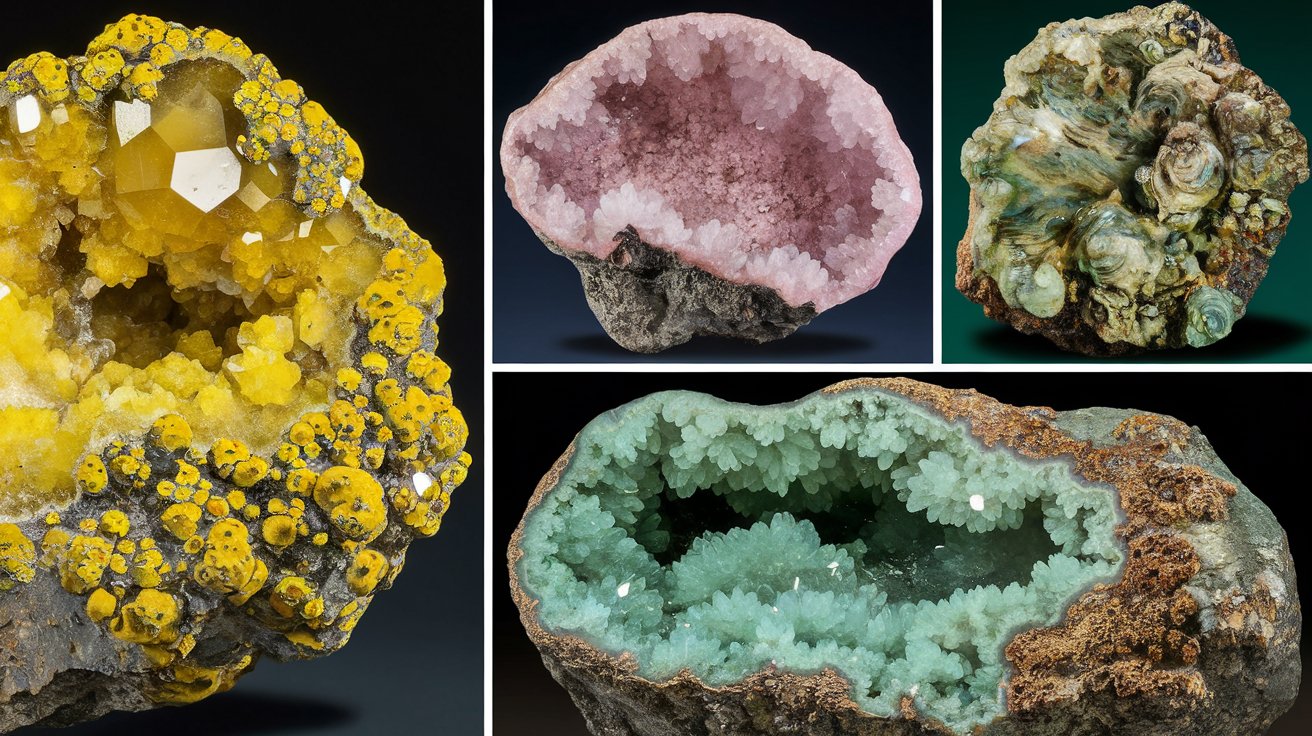
Zaherite is a rare mineral that has intrigued scientists and collectors alike. Found in only a few locations worldwide, this mineral boasts a unique chemical composition and striking appearance. Zaherite typically forms in arid environments, often associated with evaporite deposits. Its crystals can range from translucent to opaque, displaying a variety of colors depending on impurities. Despite its rarity, Zaherite has significant value in geological studies, helping researchers understand the processes that shape our planet. Whether you're a budding geologist or a seasoned collector, learning about Zaherite can offer fascinating insights into the natural world. Ready to dive into some intriguing facts about this captivating mineral? Let's get started!
Key Takeaways:
- Zaherite is a rare, shiny mineral found in deserts. It's named after Dr. Zaher and forms in arid environments. It's used in research and can even glow under UV light!
- Zaherite is a unique mineral with a complex structure. It's soft, light, and can dissolve in water. It's a hit with mineral collectors and has potential uses in environmental science.
What is Zaherite?
Zaherite is a rare mineral that has intrigued geologists and mineral enthusiasts alike. Its unique properties and formation process make it a subject of fascination. Let's dive into some intriguing facts about this mineral.
-
Zaherite is a sulfate mineral, which means it contains sulfur and oxygen atoms bonded together.
-
The chemical formula for Zaherite is Al_12(OH)_26(SO_4)_5·20H_2O.
-
It was first discovered in 1977 in the Al Hajar Mountains of Oman.
-
Zaherite is named after the geologist who discovered it, Dr. Zaher.
-
This mineral typically forms in arid, desert environments where evaporation rates are high.
Physical Properties of Zaherite
Understanding the physical properties of Zaherite can help identify it in the field. Here are some key characteristics.
-
Zaherite crystals are usually colorless or white, though they can sometimes appear pale yellow.
-
The mineral has a vitreous to pearly luster, giving it a shiny appearance.
-
It has a Mohs hardness of 2, which means it is quite soft and can be scratched easily.
-
Zaherite has a specific gravity of 2.3, making it relatively light compared to other minerals.
-
The crystals are often found in fibrous or needle-like formations.
Chemical Composition and Structure
The chemical makeup of Zaherite is complex, contributing to its rarity and unique properties.
-
Zaherite contains aluminum, which is a key component of its structure.
-
The mineral also includes hydroxide ions, which are groups of oxygen and hydrogen atoms.
-
Water molecules are an integral part of Zaherite's structure, making it a hydrated mineral.
-
The sulfate groups in Zaherite are responsible for its classification as a sulfate mineral.
-
Zaherite's structure is layered, with water molecules sandwiched between layers of aluminum and sulfate.
Formation and Occurrence
The formation process of Zaherite is as fascinating as the mineral itself. Here’s how it forms and where it can be found.
-
Zaherite forms through the evaporation of sulfate-rich water in arid environments.
-
It is often found in the same locations as other evaporite minerals like gypsum and halite.
-
The mineral can also form as a secondary mineral in the oxidation zones of sulfide deposits.
-
Zaherite has been found in several locations worldwide, including Oman, Chile, and the United States.
-
It is typically found in small quantities, making large specimens rare and valuable.
Uses and Applications
While Zaherite is not widely used in industry, it has some interesting applications and uses.
-
Zaherite is primarily of interest to mineral collectors due to its rarity and unique properties.
-
It can be used in scientific research to study sulfate minerals and their formation processes.
-
Zaherite's unique structure makes it a subject of interest in crystallography studies.
-
The mineral can also be used in educational settings to teach students about sulfate minerals and evaporite formations.
-
Some researchers are exploring potential uses for Zaherite in environmental science, particularly in understanding sulfate cycles in arid regions.
Fun Facts About Zaherite
Here are some additional fun and lesser-known facts about Zaherite that might surprise you.
-
Zaherite is often found in association with other rare minerals, making its discovery even more exciting for geologists.
-
The mineral can sometimes fluoresce under ultraviolet light, emitting a faint glow.
-
Zaherite crystals can grow up to several centimeters in length, though most specimens are much smaller.
-
The mineral is sensitive to moisture and can dissolve in water over time, making it challenging to preserve.
-
Zaherite has been featured in several mineralogical journals and publications, highlighting its significance in the field of geology.
Final Thoughts on Zaherite
Zaherite, a rare mineral, holds a unique place in the world of geology. Its distinct properties and limited occurrence make it a subject of fascination for scientists and collectors alike. Found primarily in arid regions, Zaherite's formation process involves the evaporation of sulfate-rich waters, leading to its crystal structure. This mineral's rarity and the conditions required for its formation contribute to its value and intrigue. Understanding Zaherite not only enriches our knowledge of geological processes but also highlights the diversity and complexity of Earth's mineral wealth. Whether you're a seasoned geologist or just curious about the natural world, Zaherite offers a glimpse into the intricate and often hidden processes that shape our planet. Keep exploring, and who knows, you might just stumble upon a piece of Zaherite yourself!
Frequently Asked Questions
Was this page helpful?
Our commitment to delivering trustworthy and engaging content is at the heart of what we do. Each fact on our site is contributed by real users like you, bringing a wealth of diverse insights and information. To ensure the highest standards of accuracy and reliability, our dedicated editors meticulously review each submission. This process guarantees that the facts we share are not only fascinating but also credible. Trust in our commitment to quality and authenticity as you explore and learn with us.


